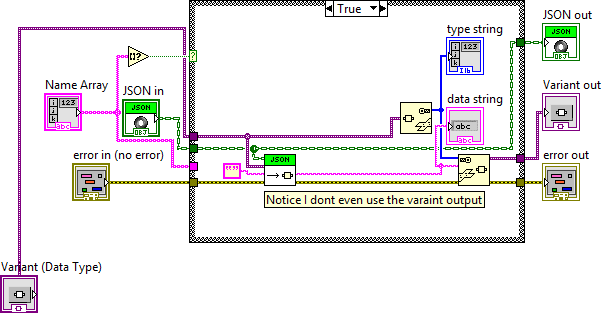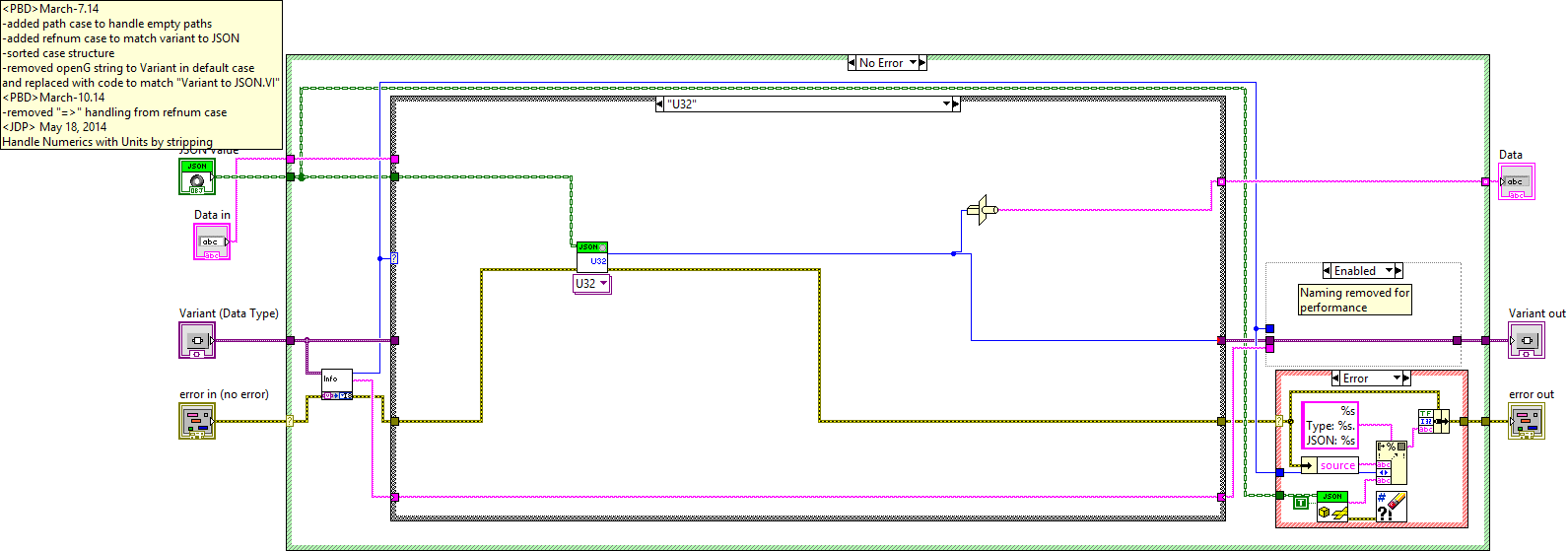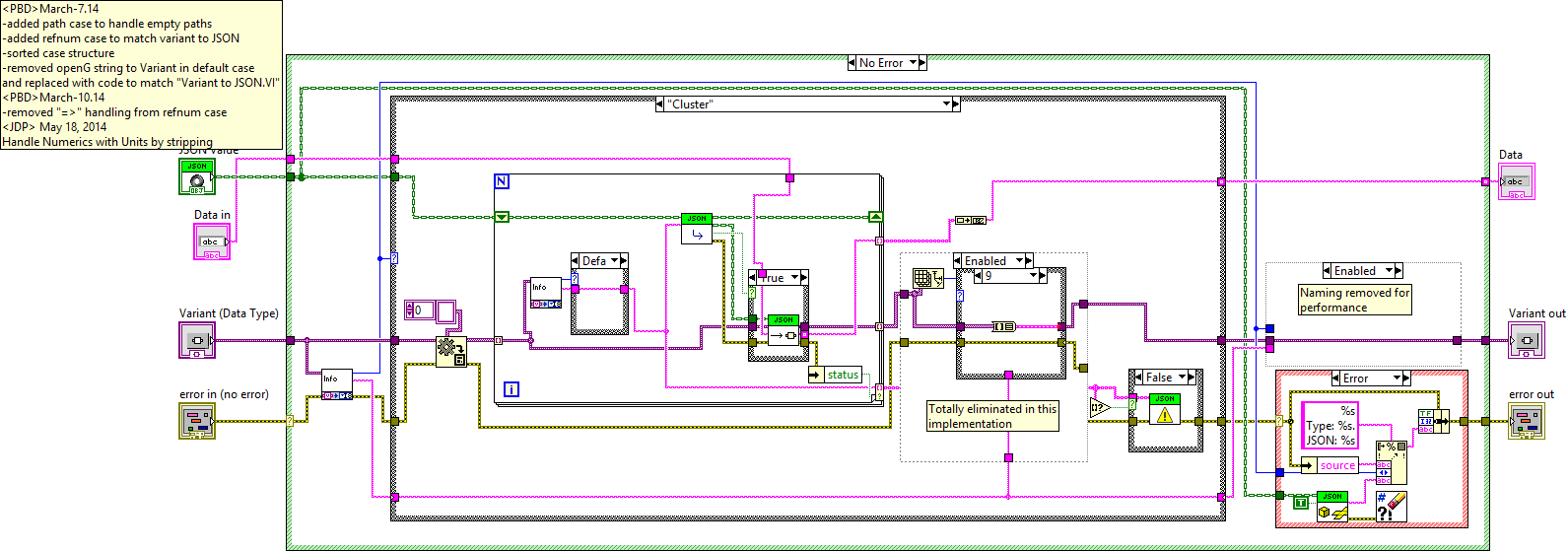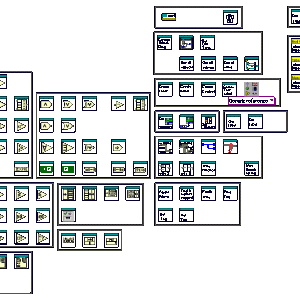-
Posts
186 -
Joined
-
Last visited
-
Days Won
4
Jon Kokott last won the day on March 29 2018
Jon Kokott had the most liked content!
Profile Information
-
Gender
Male
-
Location
Milwaukee, WI
LabVIEW Information
-
Version
LabVIEW 2010
-
Since
2006
Recent Profile Visitors
4,546 profile views
Jon Kokott's Achievements
-
I'm using this library, but I've had to modify alot of the variant related attributes for performance and data handling. Most of what I have removes the OpenG stuff and directly casts types. It will also properly preserve data names/typing unlike the current version without extra variant to data casts. I don't really want to go through all the data types that I'm not using, but If you're still interested in maintaining this its probably a worthwhile upgrade. Get as Variant logic will change to look more like this surely there will be some difficulties with this approach on certain data types, and I dont really want to go through and test them, but dynamically building variants is pretty slow and some of the functions are quarter baked which removes the type string. I've got an assortment of scalars, arrays, and clusters working with this method. Let me know if you're interested in this.
-
Not CLA restricted: https://decibel.ni.com/content/docs/DOC-38927 You'll have to be a CLA to get the power point, but thats all that is there, and a link to what I just posted. Trying again... silly NI redirects.... https://decibel.ni.com/content/docs/DOC-38927
-
I use websockets to do this. This is the same code I presented at the CLA summit -- without the SSL encryption/authentication server. At the summit I had about 50-75 clients at a given time messaging them all updates at 100 ms (packets were smaller than the TCP frame size, I didn't' really notice any kind of CPU spike at that point on my laptop) WebSocket.zip
-
The labview webbrowser stuff is pretty crappy. Use a .net webBrowser control, navigate, get the document and you can pretty much do what you want using standard .net calls, and really gives you better control over the browser (which is IE version on your machiene) At this point you can pretty much google how to get stuff, just look to use visual basic or C# and follow the .net calls putting them in labVIEW. Enjoy! Get Webpage Stuff.vi
-

Re-using the command line interface
Jon Kokott replied to Ton Plomp's topic in Calling External Code
If anyone stumbles across this, a better method is to use the windows .net calls. https://msdn.microsoft.com/en-us/library/system.diagnostics.process%28v=vs.110%29.aspx its probably the same thing system exec does under the hood, but you get asynchronous control of standard in, out, and err. I'm certain the performance of this will crush anything else, and all the software is already on your windows machine. ~Jon -
For the only Xnodes I created/actually used, I created a method where you could right click on the Xnode and replace the Xnode with a subVI containing whatever the xnode created. Its really straightforward to implement, I'll try to dig it up but its been a while and I haven't been maintaining it.
-
Good luck with those Xnodes, they're pretty tricky. I used some tools available on this forum that were pretty helpful, I just never had the confidence to put one in a project someone paid me for. ~Jon
-
I think its because your terminal on the xnode isn't really a typedef but just an adapted terminal. Maybe try opening the typedef itself (by using the string of the actual name) and then getting the path. So somethign like: control -> Value-> Strip out typedef name from variant -> open vi reference (with the string name in same application ref) -> then get path. ~Jon
-
It would be easier if you simply posted the code, however, I suspect that the class going into your init function is not the same as the one coming out. Other LVOOP comment, take a look at the Actor Framework. It comes with labVIEW, and I think will take you to a better place, however, it is probably a difficult place to start off with LVOOP as some of the conceptual aspects of it are more difficult than the code you've presented.
- 8 replies
-
- oop
- object-oriented
-
(and 2 more)
Tagged with:
-
AHH VI.lib just got password protected!!!! just kidding. thanks.
-
I need to automate password protecting a large amount of VIs. I can't seem to find a way to do this easily, anyone know how? ~Jon
-
Thanks Dan, this will do the job. ~Jon
- 10 replies
-
- asynchronous
- call and forget
-
(and 3 more)
Tagged with:








